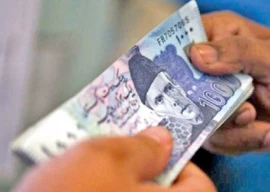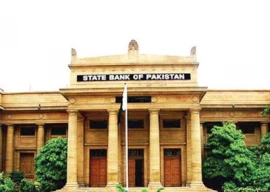
Punjab province saw a 21 per cent leap in officially recorded crimes against women in February 2011, compared to January 2011, according to Free and Fair Election Network’s (Fafen) collection of officially documented criminal cases in 69 districts across Pakistan.
These crimes against women include honour killings, sexual harassment, compelling a woman to marry, rape and offenses related to marriage law.
The offices of District Police Officers (DPOs) in 25 out of 28 monitored districts of Punjab reported 700 FIRs on crimes targeting women in February 2011 while in January the police administration of 23 out of 29 observed districts in the province reported 578 crimes against women.
Crime statistics were collected by Fafen Governance Monitors from the offices of DPOs in a total of 69 districts across Pakistan in February 2011. To collect data, Fafen governance monitors visited the DPO offices of 28 districts in Punjab, 18 districts in Khyber-Pakhtunkhwa (K-P), 16 in Sindh, six in Balochistan and one district in Islamabad Capital Territory.
Nationwide, the police in 33 out of 69 districts observed reported 853 crimes against women. Four in every five cases of crimes against women were recorded in Punjab districts.
This was a significant increase on Punjab’s 67 per cent of crimes against women in January, even though only two more districts of Punjab shared information about these crimes (25) than had done in January (23).
Monitored districts in Sindh on the other hand, managed to cut their share of crimes against women from 24 per cent to 12 per cent, despite the number of districts monitored in Sindh falling by only one fourth, from 12 to 9. Around five per cent of crimes against women were registered in KP, 0.3 per cent in ICT and 0.2 per cent in Balochistan. With 158 FIRs of crimes against women Lahore District displaced Faisalabad as the district recording the most crimes against women.
In fact, considerably higher crime reportage was observed in Punjab in all major categories of crime. Punjab’s 28 monitored districts (of 69 nationwide or 40 per cent of total districts sharing caseload) accounted for a disproportionately large 20,645 (80 per cent) of the total 25,757 FIRs registered for all crimes.
Punjab’s share increased by four per cent from January’s figure. Sindh’s share, on the other hand, decreased from 13 per cent in January to 10 per cent in February. K-P registered 8 per cent of the total FIRs in February while Balochistan and ICT reported 1 per cent each. Approximately 65 per cent of the total crimes of physical harm were reported in Punjab. Sindh followed with 19 per cent, and KP with 13 per cent. Only 3 per cent of crimes of physical harm were recorded in monitored districts of Balochistan, and 1 per cent in ICT.
Most of the crimes against property, 84 per cent, were also reported in Punjab. This was followed by 12 per cent in Sindh, and 1 per cent each in ICT, K-P and Balochistan. Similarly, the observed districts of Punjab, Sindh, K-P and Balochistan accounted for 91 per cent, 7 per cent, 1 per cent and 0.4 per cent respectively of the total 2,574 crimes of threat and fraud.
Accordingly, four of the five districts that reported the most crimes were in Punjab. Lahore District came top, with a huge 23 per cent of all recorded crimes in monitored districts being reporting in this district alone. This was almost twice the figure for the district in second place, Faisalabad, which recorded 13 per cent of crimes in monitored districts. Multan followed with 5 per cent, and Rahimyar Khan with 4.1 per cent. Karachi district of Sindh came fifth, with 3.9 per cent of FIRs in monitored districts.
The high rate of registration of crimes in Punjab, however, does not mean that crime is necessarily more prevalent in Punjab than in other provinces. It could be attributed to the province’s large population, or to local people’s trust in the state-run judicial system.
On the other hand, a low rate of crime reporting in regions such as Balochistan and K-P does not necessarily represent a low crime rate there - other factors might be at work. These could include the police failing to record crimes brought to their attention, citizens’ lack of trust in the police, or the existence of a strong parallel (traditional or community-run) justice system.
Published in The Express Tribune, May 18th, 2011.



































1714129906-0/Clint-Eastwood-(1)1714129906-0-270x192.webp)





COMMENTS
Comments are moderated and generally will be posted if they are on-topic and not abusive.
For more information, please see our Comments FAQ